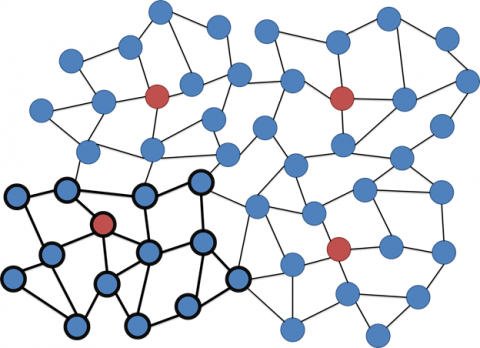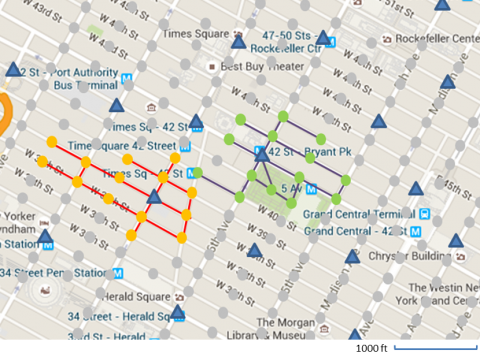In this project we consider high speed mm-wave links for the application of providing low-cost wireless backhaul for densely deployed urban picocells. High directionality of mm-wave links - required to compensate for the higher path loss and easily implemented within small form factors due to the low wavelength - provides a high level of angular isolation between nearby links increasing the potential for spatial reuse. To create a robust network, nodes are connected in a mesh structure via high speed directional links with minimal interference limited to links that are aligned within the main beam of their antennas and those with the transmitter of one and the receiver of the other located on the same node. A subset of the nodes in the network are connected to the core network (or internet) and act as gateways; data is transferred from users in each node's picocell over the backhaul mesh to the gateway and vice versa. The network is thus divided naturally into "clusters" around gateways when each node routes its data through its nearest gateway.
To manage medium access in this network, the task of resource allocation is modeled as an optimization problem where "resources", i.e. time slots, frequency bands, etc., are divided between different subsets of links that can be activated simultaneously with enough isolation in the spatial domain. In our approach, instead of modeling a complicated problem in the L dimensional space of links, the problem is blown up to the 2^L dimensional space of subsets of links where it is easily modeled by a linear programming problem. Since each cluster can be considered independently, the problem size does not scale with the size of the network as long as cluster size remains constant, and the increased problem size does not become a bottleneck.
Defining network throughput as the data rate delivered from the gateways to each node in a cluster, we find that the optimum allocation obtained by the proposed approach provides a throughput of more than 15% of nominal link data rate in the clusters of Figure 2, based on a hypothetical deployment in part of Manhattan, NY, which indicates that Gbps backhaul can be provided to picocells using 10 Gbps links.
Dongning Guo (Northwestern University)


